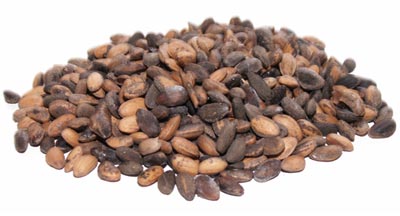Genetic improvement of the Maritime Pine
• Genetic improvement of the Maritime Pine
• Production of young plants of Maritime Pine
• Forest ploughing in the forest range of the Landes of Gascogne
• Planting the Maritime Pine
• Exploitation of the Maritime Pine
• Management's documents
• Cleaning up and Rebuilding after the storm Klaus
• Biodiversity and the Maritime Pine
Maritime Pine - Pinus pinaster
Forestry Markers, Tree Guards, Tree Shelters, Tree stakes, Weed Control Fabric, Pruning saws, Bow saws, Chainsaws, Brush cutters, PPE
The Landes of Gascogne are the first European, cultivated forest, in terms of productivity and surface area.
In 1960 a program of genetic improvement of the maritime Pine has started lead by the INRA with the successive planting of seeds' orchards which had different levels of improvements.
The genetic improvement of specie has for aim obtaining straighter trees which have better growth.
Chronicle of the genetic improvement:
1926: Installation of the first arboretum of Maritime Pines coming from different natural areas.
1960-1969 / 1972-1974: selection campaign of trees which have superior growth and shape which lead to the planting on 246 hectares of seeds' orchards 1st generation.
The limited quantity of seeds genetically improved and their high cost has modified the reforestation method, replacing progressively the sowing by the planting. The seed is sown in a nursery to produce genetically improved plants.
Indeed, 1 hectare of sowings requires 3 kg of seeds, that is to say 45 000 seeds. In a nursery, 45 000 seeds produce 40 000 plants, or 30 hectares of forest replanted instead of 1 hectare if using seeds.
1978-2000: Gradual use in reforestation of sowing seeds coming from 1st generation, seeds 'orchards.
1986-1995: Installation of seeds' orchards of 2ndgeneration on 200 hectares.
Since 1998: Gradual use of seeds coming from 2nd generation' seeds' orchards.
2003-2006: Installation of seeds' orchards of 3rd generation (VF3)
2006: Installation by PLANFOR of a seeds' orchard of 3rd generation, 17 hectares 60 in Carcans (33). The planting chosen by PLANFOR should allow an early harvest of Pine comes in 2013.
2012: First harvest in the seeds' orchards VF3.
Since the autumn 2013, gradual use of seeds coming from 3rd generation seeds orchards.

How do we create a genetically improved variety of Maritime Pine?
The main objective of genetically modifying a Maritime Pine is to increase straightness and growth of mature trees. The trees which have remarkable criteria and qualities are selected.
Crossings are done with the goal of obtaining plants which have different levels of genetic improvements.

How do we create a new variety of Maritime Pine?
Cross-breeding is the genetic improvement technic which has allowed the crossing of trees from the same family so as to improve its specifications. The variety type Landes x Corse is the result of a controlled pollination between two different varieties of Pine: one originating from the Landes area and the other one coming from Corsica. Nowadays we have the varieties of type LC2.

Controlled pollination is the fecundation of a female flower by the male pollen of another variety.
1- The best female flowers are selected and the other ones are removed.
2- Afterwards, the flowers are placed in bags for three weeks and male pollen is injected in each bag.
3- The cones harvest is done 2 years after fecundation has taken place, before it starts to get hot, that is to say around March/April. The harvest is done in the presence of the SRFOB (Local Service of the forest and the wood) which certifies the seed's origin.
4- The cones are then exposed to heat in order to open themselves and to harvest the seeds.
5- The seeds are going through a 'desailleuse' so as to separate the seeds from the wings.
6- The seeds can be stored during several years before being sown but they lose their germinating power over time.
Results of the genetic improvement on the Landes Forest:
The genetic improvement has allowed increasing the average productivity in The Landes Forest since the 1960. The yield has increased going from 4.8 m3/hectare/year in 1960 to 10m3/hectare/year in 2000. We can safely say that the yield will reach 12m3/hectare/year from now to 2015.
The genetic improvement is not the only actor in this progress.
The evolution of the silvicultural technics also comes into play.

- The cleaning up and the ploughing technics;
- The phosphate fertilisation at planting time and deferred at 3-4 years;
- The control of self-propagating plants;
- Earlier thinning out and thinning out closer together;
- Stoppage of tree tapping which has reduced rotations;
- The development of the wood market which heads towards productions of more than 12 m3.










































































































































































































































